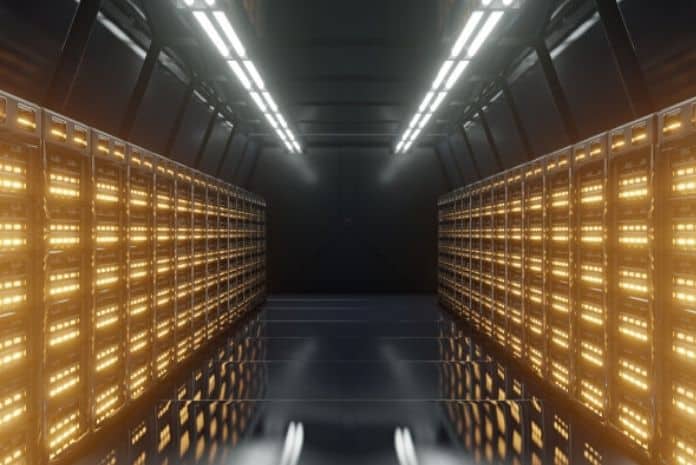By Rajesh Kaushal, Vice President, Delta Electronics India
Introduction:
In an age defined by digital transformation, the importance of data centers cannot be overstated. However, with the rise of data-driven technologies comes the pressing need for sustainability. As energy consumption skyrockets and environmental concerns escalate, the data centre industry finds itself at a crossroads. The journey towards net-zero energy consumption presents both challenges and opportunities. In this article, we explore the evolution
of sustainable data centers and how companies like Delta Electronics are paving the way towards a greener future.
The imperative of sustainability in data centers
Data centers are the backbone of the digital world, facilitating the storage, processing, and dissemination of vast amounts of information. Yet, their energy-intensive operations contribute significantly to carbon emissions and environmental degradation. As businesses and governments increasingly prioritise sustainability, data center operators are under mounting pressure to reduce their carbon footprint and adopt eco-friendly practices. The transition to
sustainable data centers is not merely a choice but an imperative for the industry’s long-term viability and environmental stewardship.
Urgency for carbon neutrality
Data centers, designed to handle extensive data storage and processing, are significant consumers of power, accounting for 1% to 3% of the world’s total power consumption. Moreover, their carbon emissions contribute up to 3.7% of global emissions, surpassing even the global airline industry. With data center capacity projected to double in the next 5 to 7 years, the urgency for carbon neutrality has never been greater.
Many data center operators, including major players like Amazon, Microsoft, and Google, have committed to achieving net-zero carbon emissions. Renewable power purchase agreements (PPAs) play a crucial role in supporting these sustainability goals. However, achieving net-zero carbon emissions requires a multifaceted approach that goes beyond sourcing renewable power.
Measuring and improving sustainability efforts
Technological advancements have led to improvements in Power Usage Effectiveness (PUE), with Singapore setting the benchmark at 1.3 PUE for new data center construction. While reducing PUE is essential, achieving net-zero carbon emissions also requires optimisation of Water Usage Effectiveness (WUE) and overall Carbon Usage Effectiveness (CUE). This trinity of measurement should become the new standard for green data centers.
For instance, Google reported consuming approximately 4.3 billion gallons of water by its data centers in 2021, highlighting the need for improved WUE. While commitments towards water replenishment are commendable, a collective effort from all data center operators to reduce WUE is essential for sustainable operations.
India’s role in driving sustainability
India’s renewable energy production surpasses countries like the USA, positioning it as a leader in the transition to sustainable energy. With a target to generate 50% of power from renewable sources by 2030, India has the potential to support data centres sustainability objectives through increased renewable energy adoption.
However, challenges remain, including the need for alignment between data center operators and their end customers net-zero commitments. Moreover, the pace of renewable energy capacity addition may not keep up with data center deployments, potentially delaying net-zero targets.
Navigating the path to net zero
In navigating the path to Net Zero, we recommend the following approach
Energy efficiency solutions: Conducting energy audits provides an opportunity to optimise energy consumption, offering recommendations on cooling, power distribution, lighting, and equipment selection to minimise energy wastage and enhance efficiency.
Renewable energy integration: Embracing renewable energy sources such as solar, wind, and hydroelectric power allows data center operators to align with ESG environmental goals, reducing reliance on fossil fuels and mitigating carbon emissions.
Sustainable design and construction: Incorporating green materials, energy-efficient technology, and sustainable building practices during the design and construction phases enhances the environmental performance of data centers, promoting long-term sustainability.
Green certifications: Pursuing certifications like LEED or BREEAM demonstrates a commitment to environmental sustainability, providing tangible evidence of compliance with rigorous green building standards.
Waste management: Implementing comprehensive waste management strategies, including waste minimisation, recycling, and responsible waste disposal, minimizes environmental impact and promotes sustainable operations
Social impact: Embracing the social dimension of ESG involves promoting fair labor practices, supporting local communities, and fostering workforce diversity and inclusion to create positive social impact beyond environmental considerations.
Governance and compliance: Establishing robust governance structures and adopting ESG- aligned policies ensures transparency, accountability, and compliance with relevant regulations and standards, fostering a culture of sustainability and ethical business practices.
Reporting and communication: Regularly communicating sustainability initiatives through ESG reports enables stakeholders, investors, and clients to understand the progress and impact of sustainability efforts, fostering trust and accountability in the pursuit of Net Zero goals.
Conclusion
In conclusion, the journey towards net-zero energy consumption in data centers requires concerted efforts from industry stakeholders, policymakers, and technology innovators. By prioritising sustainability, data center operators can minimise their environmental footprint and contribute to a greener future. Collaboration, innovation, and a commitment to carbon neutrality are essential as we navigate the path towards sustainable data centers and a more resilient
planet.














